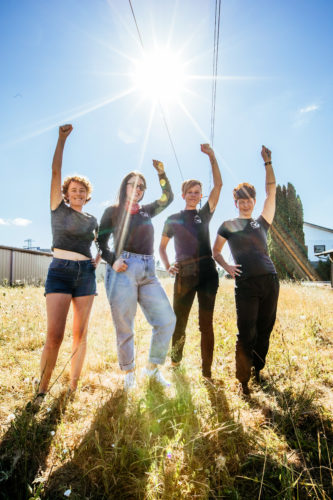
Workers at White Bird’s crisis response programs CAHOOTS and HOOTS are on the same page when it comes to voting on unionizing.
The two groups voted unanimously to move forward with unionizing and to join the Teamsters Local 206 chapter. It was a re-energizing election outcome, says CAHOOTS crisis worker Chelsea Swift, that has given workers some momentum as they advocate for better working conditions.
“The most exciting part has been the level of participation, regardless of the outcome,” Swift says. “To see our coworkers engaged in this process has been so inspiring and made me really optimistic.”
During the height of Black Lives Matter-related protests, CAHOOTS (an acronym for Crisis Assistance Helping Out on the Streets) was highlighted by policymakers and protesters as an alternative to the U.S. policing. The program was covered from The New York Times to People, and it motivated Sen. Ron Wyden to push for legislation that would fund similar crisis response programs throughout the country.
CAHOOTS is a first responder for mental health-related emergency calls. It follows a de-escalation protocol when working with its clients and is dispatched through calls made to non-emergency police lines in Eugene and Springfield.
On August 17, CAHOOTS and HOOTS (Helping Out Our Teens in Schools), which sends counselors and nurses to Eugene area schools, notified White Bird that workers would seek to unionize. Workers previously told Eugene Weekly that they were understaffed and due to low wages and benefits, CAHOOTS and HOOTS were having trouble retaining staff.
On Sept. 29, the National Labor Relations Board counted mail-in ballots from the election. Thirty-six out of 42 CAHOOTS and HOOTS workers participated in the vote, all of whom approved unionizing.
“We’ll continue to use our transparent democratic process with our team to prioritize what we’re bargaining for,” Swift says. Workers will also discuss some of the noneconomic issues, which Swift says could include matters that emerge working in a van out in the streets and how to protect themselves better.
“It feels pretty incredible to do this alongside CAHOOTS,” says Hayley Shapiro, HOOTS program coordinator. “Our program was born out of CAHOOTS workers going into schools and holding clinics. To have our shared history lead us to this place where we’re able to advocate for ourselves together, feels really exciting.”
Shapiro says that she and HOOTS workers are discussing what they want to see in a contract for its growing team. “We doubled in size this summer,” she says. “Wages and benefits will keep people around.”
Before summer, HOOTS had about six workers, and now it has 12, Shapiro says. Although HOOTS workers don’t have as intense schedules as CAHOOTS staff, she says she still wants to ensure the program can retain employees. “Making sure that we don’t get to a place where we can’t serve our schools,” she adds.
The next step in the unionizing process is bargaining and contract negotiations with management, in this case with White Bird. But the timing of the unionizing process aligns with the city of Eugene and CAHOOTS upcoming five-year contract timeline, Swift says. The current contract expires June 30, 2023. “That allows all of us workers to participate in that contract process and that hasn’t happened before,” she adds.